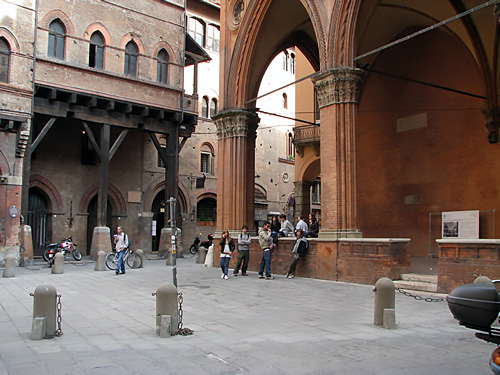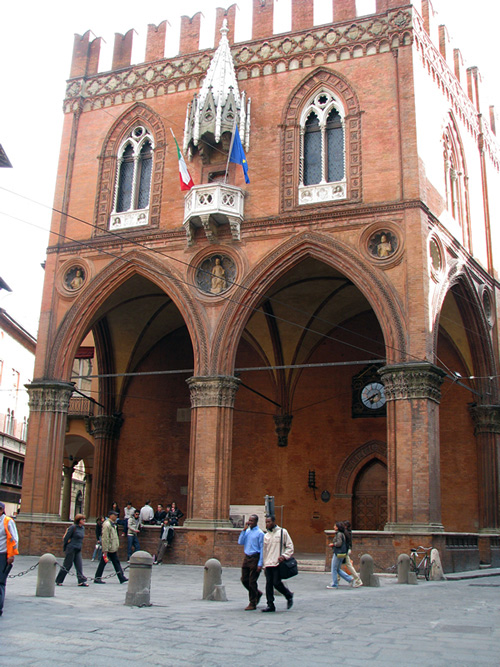How to Make Your Study Abroad Program Decision
Take Necessary Steps for Una Vita Nuova
in Italy
By Gina Mussio

|
|
Piazza Nettuno in the incredible student-centered city of Bologna, Italy, home to one of the oldest universities in Europe. It features a famous fountain created in 1567. Photo ©Transitions Abroad.
|
Like me, you might have longed to be in a specific place overseas for years. Or you may have dreamt of traveling in general, leaving for an extended period to see and experience all you can. Perhaps the first time you considered studying abroad was yesterday when a friend of a friend talked about her recent trip or a professor suggested studying abroad as an excellent way to earn credits fast. You may have encountered a destination surfing the web, during social media conversations, or illustrated exposure to ever-so-tempting stories.
The decision to study abroad came naturally to me far earlier than the start of college life. My dream was to travel to Italy, and I would do anything I could to make it happen. I studied Italian in high school, practicing mini-dialogues and imagining having them in some unidentified Italian city. As I slowly learned the language, my desire to go only continued to grow. I knew that studying abroad was the best option.
Toward the end of my first year of college, I decided to make this goal a reality. Lost as to how to start the process, I went to a study abroad fair offered by my university. At every booth, I felt simultaneously more excited about the possibilities and overwhelmed by the number of options.
Whatever your reasons for studying abroad, the leap from choosing to do so to encountering myriad steps can overwhelm many students. Only after returning from my educational experience and starting to work as a peer advisor in my university’s study abroad office did I grasp the richness of all the professional, personal, and online resources and support available to help students plan their time abroad.
As a peer advisor, I answered students' questions regarding their many options and advised how each option fit in with their overall academic goals. After helping hundreds of students from my college choose and plan their study abroad experience, I’ve found a method for tackling the overwhelming task of narrowing down the hundreds of study, work, or volunteer options available to students and then choosing the program of their dreams.

|
|
Students in Bologna hang out on one of the many squares of that great university town. Photo ©Transitions Abroad.
|
1) Start with a Focus: Location, Study, or Time of Year
Often, students came to me for general information but didn’t have anything specific in mind. That’s OK! I always suggest they start by deciding
-
the location of the desired program
-
the subject they want or need to study
-
the time of year and duration of the program
I’ve never met anyone who didn’t have some preference for at least one of those three points of focus. Any one focus serves as a great starting point. Try to choose one as an absolute “must-have,” as it will help you cut from your shortlist some of the many study abroad providers that don’t offer what you need.
My lifelong dream was to go to Italy to learn the language, so for me the location of any program was the most important. Based on my previous academic courses I knew any program absolutely had to offer advanced classes as well. I ultimately chose an intensive language program. At the same time, from the beginning of the program search process, I was open to taking other classes to explore different and exciting cultural immersion subjects. Finally, I chose the time period since my university was still based on a quarter system. The long fall break allowed me to select a semester program.
I found a program that offered what I wanted, involving all my primary criteria. More often, however, none of these critical facets can be found in one study abroad program. Nevertheless, in my experience, if you focus on the one key “must-have” necessity and are flexible with the others, you will find the program that works out best.
2) Research Your School's Study Abroad Resources and Online Resources
Once you’ve decided upon your ultimate goals (location, time, or academic), it is time to research your options. Search online through the many commercial database sites, read what others have done via first-hand reports, reviews, and informative blogs, ask friends who have study abroad experience, and speak to program alums, but be absolutely sure to also fully utilize your college’s or university's extensive resources.
A student can study abroad with a specific program offered only for certain majors — with a program through the university or through one of the many third-party program providers. Study abroad program providers are not necessarily better than others — though some clearly have better academic reputations and track records — since so much depends on your particular needs and wishes. Often, there are differences in the way credits are accepted and the organization with whom you study abroad.
Clearly, you frequently can study via a program through your school, sometimes to ensure you continue to complete the institution's core curriculum in a timely manner. In that case, you will be studying predominately with students from your school. In so doing, you may miss out on some of the cultural immersion fundamental to studying abroad. By contrast, if you choose a third-party program, the students will likely come from throughout the United States — or perhaps even from countries worldwide.
In my case, a third-party program was the only option because my school did not offer an option to provide advanced Italian language classes. To find my program, I went to a school-sponsored study abroad fair and picked up a catalog from every booth that offered Italy as an option. Pouring over every pamphlet I took home from that fair, I made lists, weighed advantages and disadvantages, and filled out forms.
My case differed from most students because I chose the program independently. Apart from this fair, I was the initial and final decision-maker. However, there are other ways to seek out a study abroad program. Though it worked out for me, if I had known about my school’s study abroad office, I could have talked with the peer advisors and received far more support throughout the selection process. Most universities and colleges can and do provide detailed information on options within and outside the institution. Do not neglect to speak extensively to your study abroad advisor, who is likely very well-versed in all such options. If they do not have a ready answer, study abroad advisors can ask any questions you may have through their peers via private internal message boards and organizations such as NAFSA .

|
|
Students in Bologna, Italy hanging out on yet another of the many squares. Photo ©Transitions Abroad.
|
3) Unveil Program Secrets Using a List: A Comprehensive Comparison of Key Factors
Obviously, there are other factors to consider besides location, the period or duration desired, and academics that go into deciding the study abroad program you ultimately choose. Listing these in your decision-making process is the best way to include them. Though I knew the three critical factors for my study abroad decision were pretty much met, that doesn’t mean I knew in which city in Italy I wanted to live, the type of living situation to select (dorms, apartments, homestays), or the extra amenities offered by each program that would prove vital to me.
So I did what I usually do — I made a list.
I returned to my dorm from that first study abroad fair with over 30 catalogs advertising marvelous study abroad experiences in Italy. I spread them out on my dorm room floor. I started writing the title, exact location, price, type of housing, academic courses available, and any fun extras that caught my eye. There were some that I could immediately eliminate, helping narrow options faster.
-
programs that didn’t offer advanced Italian
-
programs that were significantly overpriced
-
programs that didn’t provide feasible options for the semester chosen
Eventually, one program clearly stood out. The dream was transformed into reality once I had decided upon the program. I could apply early enough to get an "early bird special" on tuition, apply for scholarships, and prepare financially, academically, and psychologically for the coming educational journey. Now, it was possible to pass the entire summer lost in 24/7 daydreams of life in Italy that coming fall. All the initial steps to an exciting new adventure, "una vita nuova," had now been taken. It was possible to move from anticipation towards the realization of the dream.
Gina Mussio is from Columbus, Ohio. She graduated from Ohio University in December 2012. During the fall semester of 2010, she studied abroad in Florence, Italy, with Athena Abroad.
|
